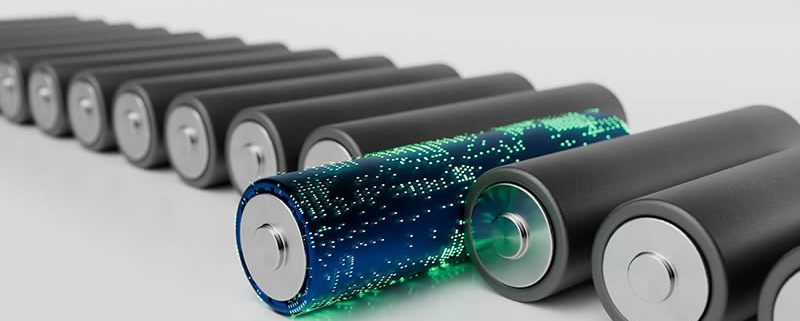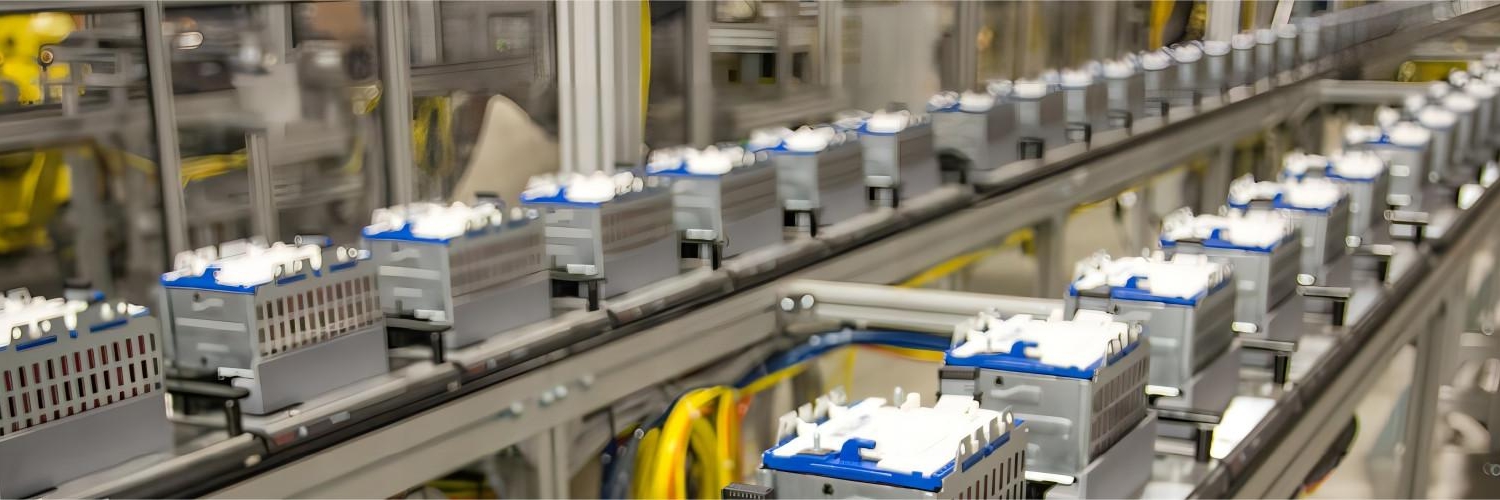Making Lithium-ion Safe
Battery packs using Li-ion require a mandatory protection circuit to assure safety under (almost) all circumstances. Governed by IEC 62133, the safety of Li-ion cell or packs begins by including some or all of the following safeguards.
- Built-in PTC (positive temperature coefficient) protects against current surges.
- CID (circuit interrupt device) opens the circuit at a cell pressure of 1,000kPa (145psi).
- Safety vent releases gases on excessive pressure buildup at 3,000kPa (450psi).
- Separator inhibits ion-flow by melting process when exceeding a certain temperature threshold.
The PTC and CID work well in a smaller 2- or 3-cell pack with serial and parallel configuration, however, these safety devices are often omitted in larger multi-cell batteries, such as those for power tools, because the shutdown can occur in a cascade format. While some cells may go offline early, the load current causes excess current on the remaining cells. Such overload condition could lead to a thermal runaway before the remaining safety devices activate.
In addition to internal cell safeguards, an external electronic protection circuit prevents any cell from exceeding 4.30V on charge. In addition, a fuse cuts the current if the skin temperature of any cell approaches 90°C (194°F). To prevent the battery from over-discharging, a control circuit cuts off the current path at about 2.20V/cell.
Each cell in a string needs independent voltage monitoring. The higher the cell count, the more complex the protection circuit becomes. Four cells in series had been the practical limit for consumer applications. Today, off-the-shelf chips also accommodate 5–7, 7–10 and 13 cells in series. For specialty applications, such as the hybrid or electric vehicle delivering several hundred volts, specialty protection circuits are made. Monitoring two or more cells in parallel to get higher current is less critical than controlling the voltage in a string configuration.
Protection circuits can only shield abuse from the outside, such as an electrical short or faulty charger. If, however, a defect occurs within the cell, such as a contamination of microscopic metal particles, the external protection circuit has little effect and cannot arrest the reaction. Reinforced and self-healing separators are being developed for cells used in electric powertrains, but this makes the batteries large and expensive.
Li-ion commonly discharges to 3.0V/cell. The lowest permitted “low-voltage” power cut-off is 2.5V/cell. It is not advised to keep the battery at that level as self-discharge could bring the cell to its cut-off voltage, causing the battery to go into sleep mode. Most chargers ignore Li-ion packs that have gone to sleep and a charge is no longer possible.
In the ON position, the internal protection circuit has a resistance of 50–100mOhm, lower on power packs. The circuit typically consists of two switches connected in series; one is responsible for the high cut-off, and the other for the low cut-off. Larger packs need a more careful design than a smaller battery, and single cell packs for mobile phones and tablets get away with a voltage and current limit in addition to some intrinsic cell protection.
Some low-cost consumer chargers may rely solely on the battery’s protection circuit to terminate the charge. Redundancy is paramount for safety, and unknowingly to the buyer, low-cost consumer chargers may be offered that do not have properly functioning charge algorithms. This could be a vehicular charger for a mobile phone or an e-cigarette.
A further concern arises if static electricity has destroyed the battery’s protection circuit. A shorted solid-state switch is permanently fused in the ON position without the user knowing. A battery with a faulty protection circuit functions normally but it fails to provide protection. The cell voltage could rise above a safe level and overcharge the battery. Heat buildup and bulging are early signs of malfunction, but some batteries explode without warning.
Mishap by air traveler who checked in Li-ion batteries undeclared that exploded before take-off. Shipping of lithium-based batteries is regulated under UN 38.3.
Manufacturers of lithium-ion batteries do not mention the word “explosion” but refer to “venting with flame” or “rapid disassembly.” Although seen as a slower and more controlled process than explosion, venting with flame or rapid disassembly can nevertheless be violent and inflict injury to those in close proximity.
Simple Guidelines for Using Lithium-ion Batteries
- Exercise caution when handling and testing lithium-ion batteries.
- Do not short-circuit, overcharge, crush, drop, mutilate, penetrate with foreign objects, apply reverse polarity, expose to high temperature or disassemble packs and cells.
- Use only lithium-ion cells with a designated protection circuit and approved charger.
- Discontinue using the battery and/or charger if the pack temperature rises more than 10ºC (18ºF) on a regular charge.
- The electrolyte is highly flammable and battery rupture can cause physical injury.
- Use a foam extinguisher, CO2, dry chemical, powdered graphite, copper powder or soda (sodium carbonate) to extinguish a lithium-ion fire. Only pour water to prevent the fire from spreading.
- If the fire of a burning lithium-ion battery cannot be extinguished, allow the pack to burn out on its own in a controlled and safe manner.





